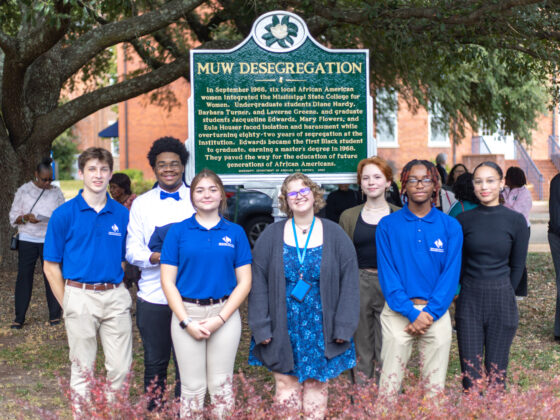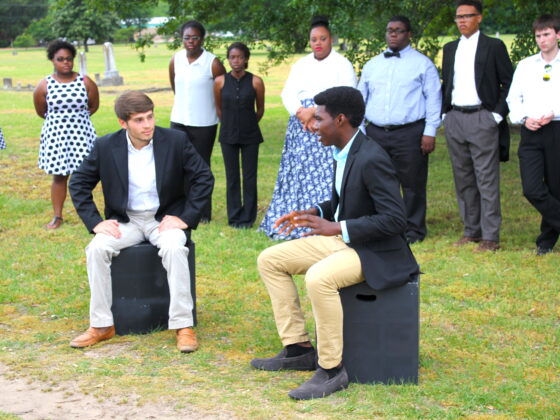On Thanksgiving Day in 1960, one of the earliest investigative documentaries in U.S. television was aired on a program on CBS called CBS Reports: Harvest of Shame, presented by the cigarette-smoking Edward R. Murrow and sponsored by Philip Morris. The hour-long program revealed the conditions of migrant workers who follow the harvest around the U.S., focusing on the lives and work of the laborers and their families and the effect of interrupted education on the children who trail them.
Murrow says, “The United States Office of Education reports that migratory workers have the have the highest rate of illiteracy in the country.” Among the children of migrant laborers, approximately one of 500 finished grade school; one of 5,000 finished high school. And he added, “There is no case upon the record of a child of a migrant laborer ever receiving a college diploma.”
The documentary was a catalyst for establishing the Office of Migrant Education in 1966, which is administered today by the U.S. Department of Education. The office is charged to support and serve the educational needs of migrant children in the U.S.
Please consider taking the time to watch the 52-minute film, for the first time if you’ve never seen it or again if you saw it long ago. It’s on YouTube here.
During a visit I paid him on a very hot July morning, Vinton described how the migrant population of Dodge City has changed over the years. He gathered several of his staff, all women, in the spacious but modest office in the old Dodge City Community College building, now home to the USD 443 (Dodge City) education administration offices. The Mexicans came first, in the 1970s and ’80s, to work in the meatpacking plants. From the 1980s to today, the Hispanic population of Dodge City schools rose from 20 percent to 79 percent. There are still lots of Mexicans, and they have been joined by waves of others from Central American countries like El Salvador, Honduras, and Guatemala. Dodge City is in effect a “port of entry,” says Vinton, even though it is 1,000 miles north of the border. There are also a small number from Africa, Asia, and the Caribbean, making the workforce of the meatpacking plants global.
There is little that is uniform in the history or situation of today’s Dodge City migrants. Here are some of the complexities of their profiles and the consequences this brings:
Arrival
The children are arriving at older ages than they were 30 years ago; many are already in their teens. Some children come with families. Others don’t. There are other monikers that describe children’s varying status. Some “border children” are smuggled in alone or with an older companion. Some are designated as “emancipated youth,” having no parents responsible for them. Then there are the Migrant Out Of School Youth—those up to age 22 who are working but who do not yet have a high-school diploma.
A sizable number of new migrants are designated as SLIFE kids. SLIFE is an acronym everyone struggles to deconstruct (Students with Limited or Interrupted Formal Education). Here they are teenagers who have rarely or never been to school before. Finding age-appropriate materials for illiterate teenagers is difficult.
Many migrant kids show up at school in August, but in what Vinton refers to as “rolling admissions” they continue to enroll in school as late as May.
Vinton occasionally referred to the migrant children as “kiddos.” This was the second time I heard this term invoked by a Dodge City education administrator. As I wrote before, this is a familiar term of endearment to my Midwest ears and it struck me as a more humane way to refer to the children than “border children” or “emancipated youth” or even migrant.
Language
Most of the migrants speak Spanish. There are well-established programs for them. Some 52 percent of students (not all of them migrants) in the DCPS are enrolled in English Language Learner (ELL) programs. The recently arrived Guatemalans have brought a linguistic twist. While Guatemala is officially a Spanish-speaking country, roughly 24 indigenous languages are spoken there as well. For some who arrive in Dodge City, an indigenous language is their sole language. This forces a problematic translation system, as there are still very few speakers of an indigenous language who can also act as interpreter into English or Spanish.
Academics
The schools are balancing multiple pressures: meeting their traditional goal for high graduation rates, providing a realistic “career path” for many students toward trades like welding or mechanics, teaching some to be basically functional in English, and addressing the extreme challenges from some entering migrant students.
In Burlington, Vermont, I heard the extreme story of one elementary-school-aged boy who arrived in the U.S. with essentially no preparation academically or culturally. He had never used a toilet and went instead to the corner of the classroom to pee. In Dodge City, there are some teenage illiterate children arriving who “don’t know how to hold a pencil,” Vinton told me.
Culture
Issues of acculturation run from the routine to the meta: How do you pay a utility bill? Where can you get a winter coat? (It’s Kansas!) How do you navigate the rules of the library? During my first visit to the Dodge City public library, I watched a conversation at the check-out desk as the librarian tried to explain to a young Spanish-speaking father that his record showed overdue books, and that he needed to return the books or pay a fine before he could check out more. He understood very little of this, and his very young daughter was finally summoned from the children’s section to serve as translator.
Some guidance is more nuanced; how do you explain to new arrivals, who have undoubtedly come from difficult circumstances via a difficult journey, that it is all right to seek advocacy or complain if someone like a landlord seems to be taking advantage of you? How do you establish a foundation of trust and convince a migrant that you have a right to speak up, and that it won’t stir up trouble for you?
Operations in Dodge City involve not only the school system, but also about 20 additional city and civic groups and organizations ranging from the Salvation Army to the dental clinic to the emergency shelter, the health clinic, churches, and the credit union. All hands are on deck in Dodge.
I asked Vinton: As a first order of business, how do they even find the children? Dodge is a small-ish town, population 28,000, and they have apparently developed the soft skills of learning where to look and asking neighborhood residents who’s new in town.
One staffer in the migrant education office described home visits to families. She arrived bearing shrink-wrapped packets of age-appropriate books to half a dozen young children in a single family, calling each by name and handing them what are most likely the first books they have ever owned in their lives.
A staffer described the meal the family was eating when she arrived: cereal with water. I recalled this detail when I watched Harvest of Shame: a migrant mother identified as Mrs. Doby, mother of nine children, described a typical family dinner. “Well, I cook a pot of beans and fry some potatoes, some corn or something like that. We don’t have milk except when we draw a paycheck, we have milk maybe once a week.” Teaching nutrition is also something the Migrant Education program tries to do today.
Some things have not changed since 1960. Says Murrow, “Everyone who knows anything about this situation agrees that the best hope for the future of migrants lies in the education of their children.”
What has changed is the chance for realizing those hopes. Back in 1960, when asked about three of her brightest students, a teacher from Cranberry, New Jersey, who taught some of the children who showed up seasonally said that she was doubtful that any of them would make it to graduating from high school. Maybe one, with luck. Today, in Dodge City, thanks to the work of the Migrant Education office, the school system, and the many groups in the city who join the cooperative effort of supporting the migrants, there is a very good chance that the migrant children will indeed get a good education, leading to a good future.




